Introduction

There is so much to say about this new Harley-Davidson Street 750 that I am confused as to what would be a perfect start to my road test. Should it talk about the Harley badge and how different the all-new Revolution X technology is in essence when compared to rest of the lineup or about its Indian origin and the cut-throat pricing? Also a bit of a warning that all these are not necessarily nice things, since to many this means it is not a proper Harley and does not fit in with rest of the gang. Then, there is the excitement about the bigger picture and the possibilities of getting more premium bikes with an affordable price tag.
But all of these will have to wait – the Street 750 is quite a handful and let us begin by just concentrating just on the product.
Looks and Styling

‘Compact’ is the best word to describe the size of the Street 750. It is not small like the single-cylinder Indian bikes, but it is not big enough to draw parallels with the rest of the premium bikes. Don’t be too surprised if you don’t get a many second glances on the road – slips under the radar, this bike. But once it gets attention things change, because then eyes immediately dart to the bold badge on the tank that proudly says Harley-Davidson.

It may be modest in size, however, the styling and attitude is spot on. The headlamp with bikini fairing, the blacked-out cylinders, two-into-one exhaust and elongated seat gives it the premium look. Harley has taken inspiration from rest of the line-up to design this bike, the paint scheme and seat styling is based on the V-Rod while the headlamp is inspired from the Night-Rod and the single-pod instrument cluster is similar to one from the 883 series. And all the elements are rounded off giving it a typical cruiser stance with stretched rake-angle.

However, in case of the Street 750, beauty is not in the details. Take a close look and it is evident that this motorcycle is built to a strict cost. The quality of the instrument cluster is just about acceptable, bits of wires and tubes are exposed in many places, the gap between headlamp and fairing is similar to that on commuter bikes and the MRF tyres don’t add much substance to the profile.
The paint quality is as per Harley standards, the tear-drop shaped tank looks nice, however I am not a big fan of subtle creases on the sides and centre of the tank – at first glance they look more like a badly done welding job than design elements.
Engine and Transmission

It took Harley 13 years to introduce an all-new engine and this one is completely different from the ones that power rest of the lineup. The twin-cylinder 750cc ‘Revolution X’ motor is liquid-cooled with four valves per cylinder and has a chain driven single overhead camshaft. It delivers healthy 65Nm of torque at 4,000rpm and about 55bhp to 60bhp (as a rule Harley does not disclose power figures). The power is delivered to the rear wheel by a toothed belt via a six-speed transmission.
Press the start button and the Street 750 comes to life with a nice rumble that is a mark of a big capacity motorcycle, but it is not a sound that we associate with Harleys. It is too mellow by their standards, although it can be corrected by using an aftermarket Screaming Eagle exhaust.

The power delivery of the Street 750 is very linear – the bike is sufficiently fast and capable of clocking 100kph is about six seconds. The first two gears are short, while the rest are quite tall making it very usable both on city roads and highways. The gear shifts with one-down and five-up pattern are quite smooth – although cost cutting is evident here. The bike cannot be cranked in gear and getting it back to neutral can be a bit of a pain, especially when the engine is hot. The bike returns an efficiency of around 15kpl to 17kpl on city roads and around 22kpl on highways.

Looking purely at the numbers, it is a quick bike. It is capable of reaching 120kph in third gear and will go on to hit speeds well beyond 160kph. However, it lacks the ferocity that is expected from a 750cc motorcycle – agreed that this is an entry-level model but it will most probably be the first upgrade for buyers from single-cylinder motors. Still it could have still done a little better, in fact, the Aquila 650 has better throttle response and I personally think that this 750 lacks a little bit of that ‘thrill factor’.
Ride and Handling

The Street 750 is a short bike – something that actually works in its favour knowing that average Indians are short in stature. It is a tad on the heavier side at 222kg, however, low centre of gravity coupled with a comfortable seating position make it very easy to manoeuvre through traffic. Even the rake-angle does not hamper its moment, and this is applicable also at high speeds.
This is one of the more friendly cruisers on the twisty roads. The chassis is very well designed and it feels stable through the corners. It is very easy to cruise at speeds between 120kph to 130kph. The MRF tyres however are a letdown, they limit the cornering capacity of the bike. Although they are not the only ones to be blamed – the braking prowess isn’t all that great and early braking is essential all the time.

In line with the philosophy of a cruiser, the ride is quite comfortable. The seating position with wide handle bar and centre-biased foot pegs works perfectly for average sized Indian, if you are slightly taller though then this bike is probably not the best option. The only big problem with centre-biased footpegs is the proximity to the engine, there is limited amount of heat insulation and it can get uncomfortably hot especially at slow speeds. The pillion seat is more of a formality – it can’t be used for anything but short rides. The suspension is nicely set up, it absorbs the bumps neatly and with decent ground clearance of 145mm it goes effortlessly over all the bad roads and speed humps.
Features

Harley has built this bike for developing markets on a tight budget and that means many features have been omitted for a mouthwatering sticker price. That should not be much of a bother though, as all of those can be bought as optional extras at Harley shops. The list includes windshield, chrome accessories, tyres, alloys, exhaust system etcetera.

The instrument cluster houses indicative lights for fuel reserve, low oil pressure, engine diagnostics and other standard lamps, apart from analog speedo and digital odo / trip meters. One extra bit it has over many other Harley models is that the offset fuel cap has a lock – a very important feature in developing markets.

Verdict

The Street 750 scores very well on the core values – looks nice, chassis is great, ride is comfortable, new engine is absolutely brilliant and the price sets a new benchmark for premium motorcycles. However, there are more than a few niggles that need to be ironed out.
My introduction talked about skepticism shown by many to include this in the Harley gang. It does lack in stature, quality, throaty exhaust note and may be even exclusivity which is an essential part of rest of the lineup. So if you are looking to buy a ‘Harley’ there might be a bit of a problem, although the company is offering a way around through accessories and customization options.
Then again look at it like a premium motorcycle without attaching it to a cult and it suddenly starts making lot of sense. At Rs 4.1 lakh (ex-showroom Delhi) it is over a lakh cheaper than its closest rival, the only other premium motorcycle available at this price point is the Ninja 300. This is a commendable achievement and Harley deserves to be applauded for it.
The Street 750 on its own is the best possible entry-level premium cruiser in India. Indigenously built, it is affordable and easy to maintain, it is decently quick and very friendly for riders upgrading from small capacity motorcycles.
Gallery
1/28
Double Tap to Zoom











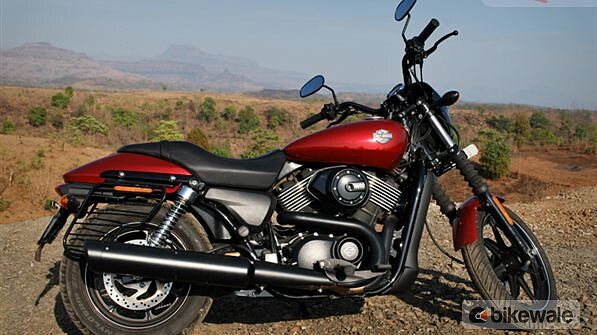












![Harley-Davidson Street 750 [2018-2019] Image Harley-Davidson Street 750 [2018-2019] Image](https://imgd.aeplcdn.com/272x153/bw/models/harleydavidson-street.jpg?20190103151915&q=80)
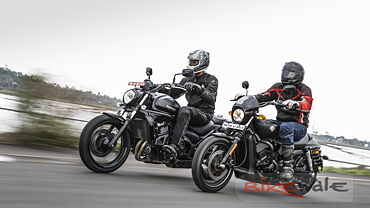
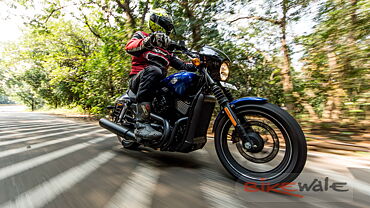















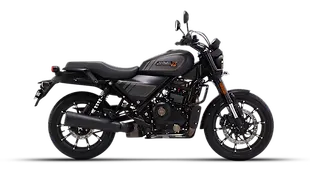
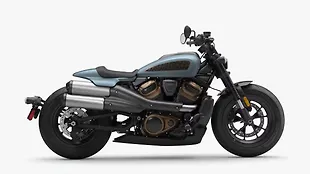
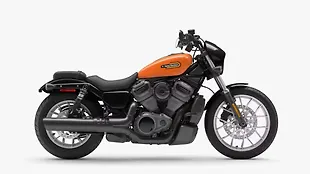





![KTM 390 Adventure X [2025] KTM 390 Adventure X [2025]](https://imgd.aeplcdn.com/272x153/n/cw/ec/190885/390-adventure-x-2025-right-side-view.jpeg?isig=0&q=80)